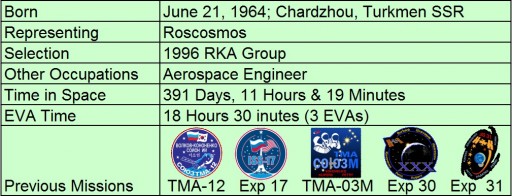Oleg Kononenko
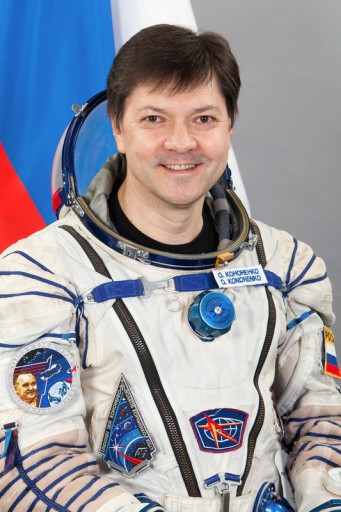
Oleg Kononenko, born June 21, 1964 in Chardzhou, Turkmen SSR, is a Russian Engineer and Test Cosmonaut with two previous long duration missions to the International Space Station, logging over one year spent in space.
Oleg Kononenko, after completing school, finished an education in Higher State Extention Patent and Invention Courses for managers, engineers and scientists. Kononenko graduated from Kharkov Order of Lenin Aviation Institute after N.E. Joukovsky (KhAI) in 1988 as an engineer, specializing in Vehicle Propulsion Systems. Afterwards, he started working at TsSKB Progress headquartered in Samara. There, he served as an engineer, design engineer and leading design engineer working on launch vehicle and spacecraft systems. TsSKB is the manufacturer of the Soyuz launch vehicle series as well as a number of spacecraft used for government and civilian purposes.
Oleg Kononenko was selected as a Cosmonaut Candidate in the TsSKB Progress division in March 1996 and entered basic training and evaluations in June, going through the general two-year training course. He received the qualification of Test Cosmonaut in March 1998 with excellent results and entered training as part of the International Space Station program in October of that year. In January 1999, Kononenko was transferred to the Cosmonaut corps of RSC Energia.
Oleg Kononenko was part of the Soyuz TM-34 backup crew together with Gennady Padalka for the third ISS Expedition. After his backup assignment was no longer required, Kononenko began training on the Soyuz TMA vehicle as a Flight Engineer and received his first primary ISS Flight Crew assignment for ISS Expedition 9 with Gennady Padalka and Mike Fincke before being transitioned to Expedition 11 with astronaut John Phillips. Due to changes in the ISS program, crews were reassigned and Kononenko lost his spot on the primary crew of Expedition 11 and had to stay on the ground for several more years. To bridge the gap, he continued generic Space Station mission training and general ISS systems familiarization as well as providing mission support to ongoing ISS operations.
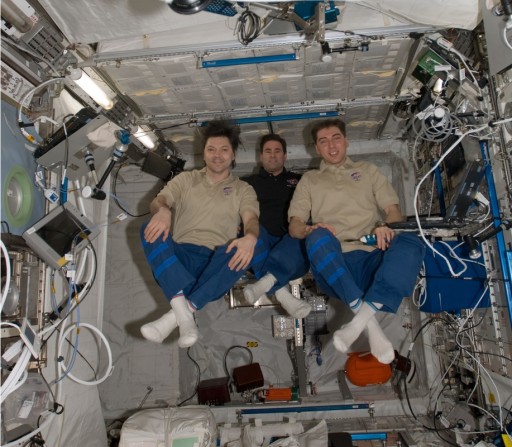
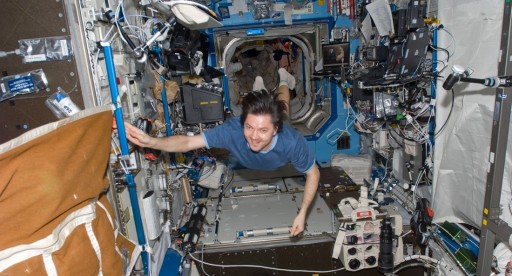
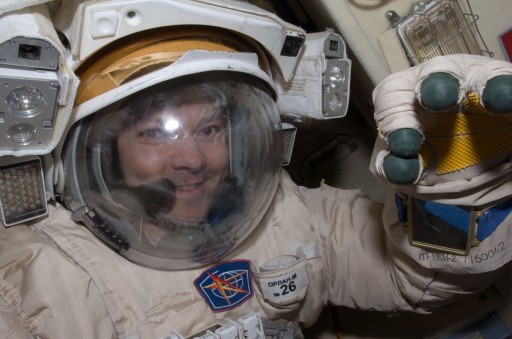
In March 2006, Kononenko began training as part of the prime crew for ISS Expedition 17 with Sergei Volkov and NASA Astronauts Garret Reisman and Gregory Chamitoff. As part of training for their ISS mission, the crew participated in training sessions at the various participating institutions including the Johnson Space Center for familiarization with US Segment systems and operations including emergency and spacewalk training. In Star City, Russia, the crews completed Soyuz and Russian Segment training and they also underwent specialized training in Japan, Europe and Canada for operations related to the Kibo module, the Columbus lab and the ISS robotics systems as well as Japanese and European visiting vehicles.
Oleg Kononenko launched on his first space flight on April 8, 2008 as a Flight Engineer with commander Sergei Volkov and Spaceflight Participant Yi So-Yeon. Arriving at ISS two days after launch, the crew was welcomed by the resident ISS crew of Peggy Whitson, Yuri Malenchenko and Garret Reisman for a short handover of just over one week during which the crew completed familiarization with the situation onboard the station and was provided information on systems by the departing ISS crew. Whitson, Malenchenko and Yi departed ISS aboard Soyuz TMA-11 on April 19 leaving Kononenko, Volkov and Reisman aboard ISS for Expedition 17. Sergei Volkov became the youngest commander of ISS as part of Expedition 17.
Expedition 17 was dedicated to the continued effort of the transition of ISS from its assembly sequence to an operational science laboratory supporting a crew of six. Much of the crew’s time during the initial weeks of the mission was dedicated to the first Automated Transfer Vehicle that had arrived early in April and needed to be unpacked. Also, the crew completed a Soyuz relocation and oversaw the arrival of the Progress M-64 spacecraft in mid-May delivering 2.1 metric tons of supplies to the Station.
On May 31, 2008, Space Shuttle Discovery blasted off from the Kennedy Space Center as part of mission STS-124, carrying the Japanese Kibo module to the International Space Station that was robotically installed on the Node 2 module of the Station. The outfitting of the module’s exterior was completed as part of three EVAs performed by Ron Garan and Mike Fossum who also completed a number of other reconfiguration and outfitting tasks on the US Segment. STS-124 also served as a crew rotation flight, taking home Garret Reisman and bringing Greg Chamitoff to the Station for his long-duration mission.
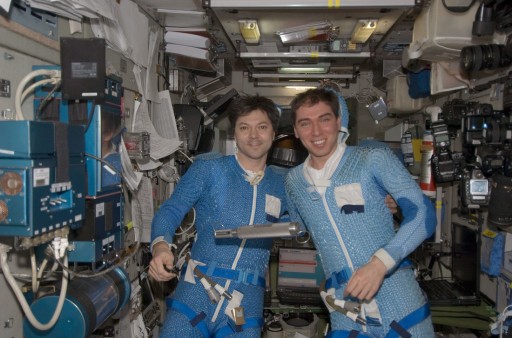
On July 10, Oleg Kononenko and Sergei Volkov ventured outside the Space Station as part of an EVA to inspect Soyuz TMA-12 after Soyuz TMA-10 and TMA-11 encountered problems during the separation of the modules just before re-entry to landing leading to descent completed in ballistic mode. As part of the spacewalk, a pyrotechnic bolt used in the separation sequence was removed for inspection on the ground. The EVA lasted for 6 hours and 18 minutes.
Kononenko and Volkov conducted a second EVA on July 15 that lasted 5 hours and 54 minutes and was dedicated to the installation of the Vsplesk experiment, the removal of a Biorisk experiment container and the outfitting of the Zvezda module for the arrival of the Poisk module in 2009.
ATV Jules Verne departed the Space Station on September 5 after a very successful debut mission of the Automated Transfer Vehicle. Progress M-65 took ATV’s place on the aft docking port of Zvezda on September 12 to keep up a steady chain of supplies to the Space Station.
The next ISS crew launched on October 12, 2008 and arrived at the Station two days later to allow Kononenko, Volkov and Space Tourist Richard Garriot who arrived with Soyuz TMA-13 to depart the Station overnight on October 23. During their long-duration mission, Volkov and Kononenko logged 198 days and 16 hours in space.
After his return to Earth, Kononenko immediately re-started training operations as part of the ISS Expedition 25/26 backup crew with Ron Garan and Sergei Volkov, serving as backup Flight Engineer on the first flight of the modernized Soyuz TMA-M spacecraft in 2010. In October 2010, Kononenko was transferred to the backup crew of ISS Expedition 28/29 with Andre Kuipers and Don Pettit.
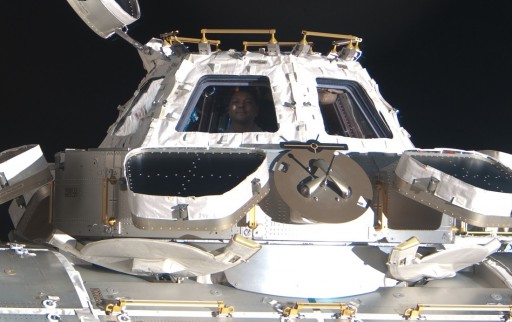
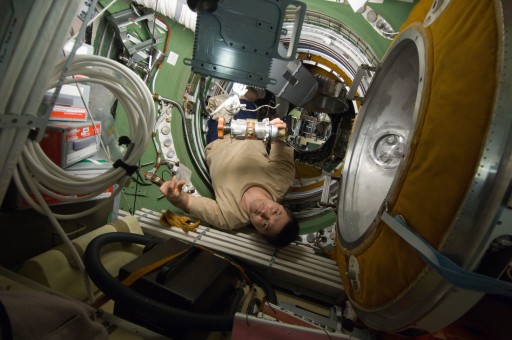
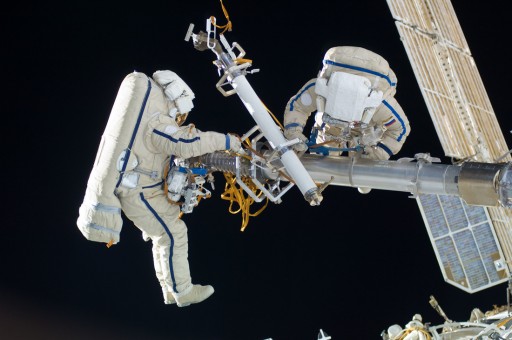
Kononenko retired from the RSC Energia Cosmonaut Corps and joined the Gagarin Cosmonaut Training Center Cosmonaut Group in January 2011. In May, the Soyuz TMA-02M backup crew passed ISS and Soyuz examinations, being cleared for flight in case a backup crew member was needed. This was not the case and Soyuz launched successfully, marking the transition of the backup crew to the Expedition 30/31 prime crew.
By November 2011, Kononenko finished ATV-specific training operations being qualified for the Teleoperated docking of the spacecraft in backup mode. Final ISS and Soyuz training of operations in nominal and in backup modes were performed by the joint crew in late November in preparation for their flight. They passed with excellent results and were cleared for their mission, heading to the Baikonur Cosmodrome a short time later. After final launch preparations, Kononenko and his crew were formally approved for launch.
Liftoff of the Soyuz FG rocket carrying Oleg Kononenko, Andre Kuipers and Don Pettit took place on December 21, 2011 and Soyuz TMA-03M arrived at the International Space Station two days after launch, bringing the crew to their home in space just in time for the holidays.
Arriving at ISS, the crew was welcomed by Expedition 30 commander Dan Burbank and Russian Flight Engineers Anton Shkaplerov and Anatoli Ivanishin. The holidays gave the crew a few quiet days during which the new crew members were brought up to speed to hit the ground running in 2012, and they were also treated to a unique view as comet Lovejoy presented a spectacular sight from the vantage point of ISS. Entering the new year, the crew supported over 150 studies ongoing aboard the orbiting laboratory while also conducting regular maintenance to keep ISS in good shape.
Oleg Kononenko and Anton Shkaplerov ventured outside the Pirs airlock on February 16 to move one of the Station’s two Strela cargo booms from Pirs over to Poisk to prepare for the eventual removal of Pirs. They also installed a series of Debris Shields on the Zvezda module and put several experiment payloads in place on the exterior of the Russian segment.
On March 23, the Edoardo Amaldi Automated Transfer Vehicle was launched atop an Ariane 5 rocket blasting off from French Guiana, loaded with over six and a half metric tons of cargo headed to the Station.
ATV-3 docked five days later and marked the start of a long cargo transfer operation. On April 19, the Progress M-14M spacecraft departed ISS to make room room for the M-15M vehicle that was launched just one day later and took two days to link up with ISS to make its delivery of nearly 2.5 metric tons of supplies.
ISS Expedition 30 was expected to end in mid-March but was extended by six weeks due to problems with the Soyuz TMA-04M spacecraft that suffered a failure of its pressure vessel during leak checks and had to be replaced by the Soyuz that was next in line, leading to a launch delay of several weeks. To avoid ISS dropping down to a crew of three for too long, Soyuz TMA-02M was kept in space until April 27 when Burbank, Ivanishin and Shkaplerov departed the Space Station, making a safe landing and ringing in Expedition 31.
Down to a crew of three, Kononenko, Kuipers and Pettit had all hands full managing the various science operations and maintaining the systems aboard the complex. Soyuz TMA-04M arrived on ISS on May 17, bringing veteran Soyuz commander Gennady Padalka and his Flight Engineers Joe Acaba and Sergei Revin to ISS.
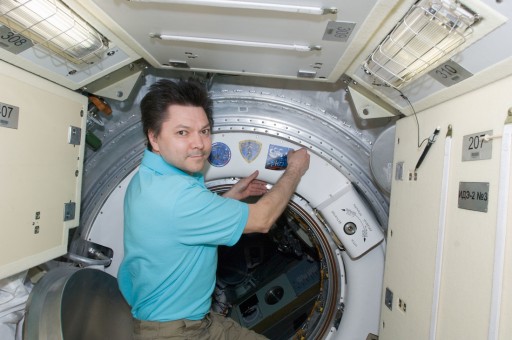
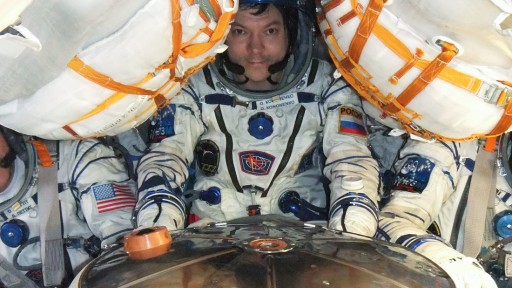
In late May, the first SpaceX Dragon spacecraft to visit the Space Station was launched from Florida and linked up with ISS for a flyaround test before being allowed to proceed to its close rendezvous with the orbiting outpost.
Dragon performed very well and was captured by the Station’s robotic arm to be berthed to the Harmony module for a short docked mission of just a few days to facilitate the transfer of cargo. The Dragon put an end to a flawless demonstration mission on May 31, making a safe splashdown in the Pacific.
Next for the crew of ISS was the sight of the Venus Transit on June 5 before they began focusing on science operations again as well as preparations for the departure of Kononenko, Kuipers and Pettit. The trio undocked aboard their Soyuz on July 1, 2012 and made a safe return to Earth after a mission of 192 days and 19 hours.
Over the course of his two space flights, Oleg Kononenko logged a total of 391 days, 11 hours and 19 minutes in space. Performing three career EVAs, he spent 18 hours and 30 minutes walking in space.
After his return to Earth, Kononenko participated in the standard post-flight operations before re-entering general training. In December 2012, he became the Head of the 1st Group of Test Cosmonaut-Instructors at the Gagarin Cosmonaut Training Center.
Later that month, he was assigned to his third flight as part of the prime crew of ISS Expedition 44/45 and the backup crew of ISS Expedition 42/43 with a crew of two rookie astronauts, Kjell Lindgren from NASA and Kimiya Yui from JAXA who will serve as Flight Engineers aboard Soyuz and ISS.
The crew of Expedition 44/45 began training for their mission in 2013 with training operations at the various ISS partner agencies to prepare for specific operations planned for their mission and to refresh general ISS systems operations. They also completed the standard survival training in a forest near Moscow which took place in January 2014.
As part of Expedition 44 and 45, Kononenko will serve as a Flight Engineer aboard the International Space Station.
Oleg Kononenko is married to Tatiana Mikhailovna Kononenko (Yurieva), they have a son and a daughter, Andrei and Alisa. In his free time, Kononenko enjoys reading books, sport games and spending time with his family.

